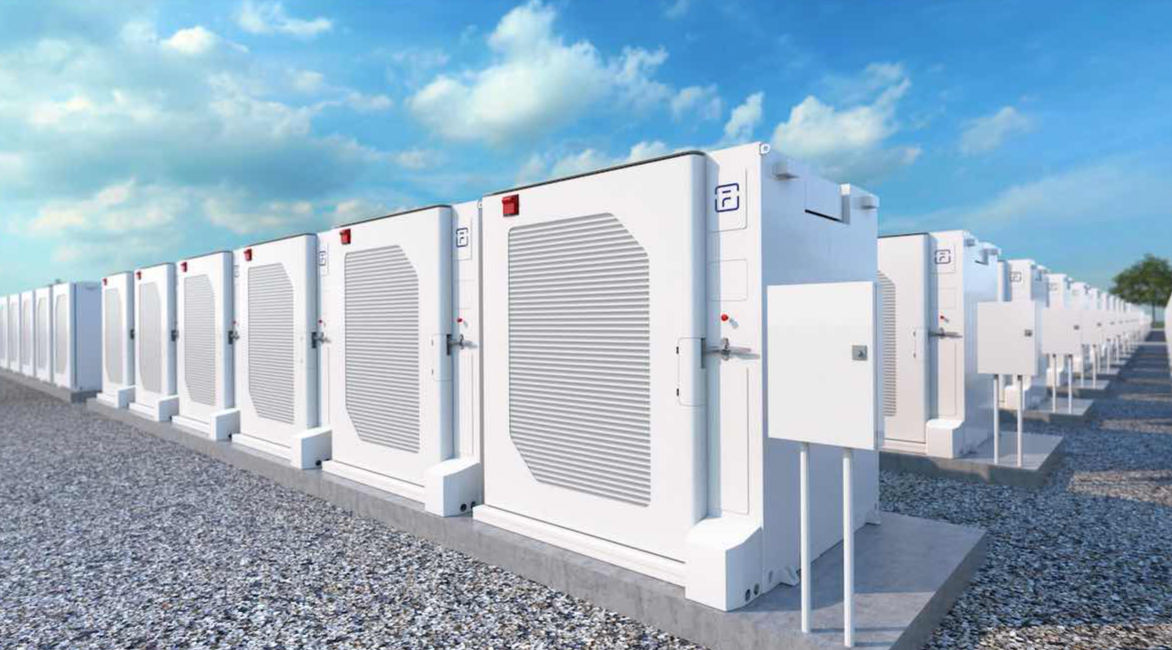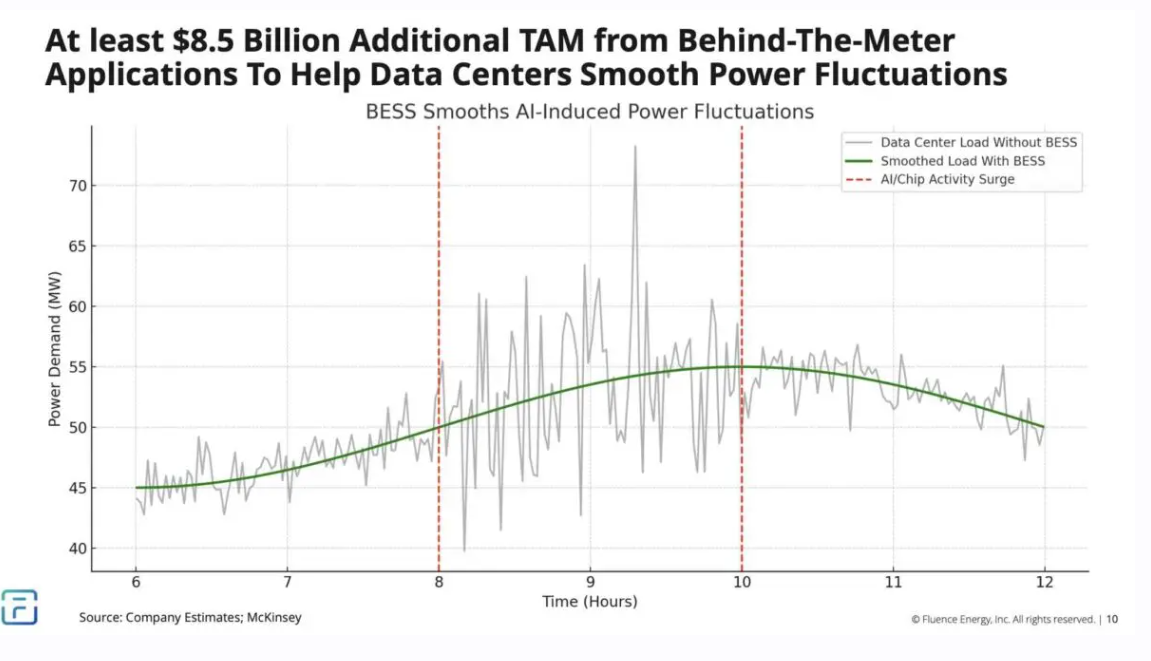The $13 billion market for batteries to smooth out data centre spikes

Perhaps the two biggest changes to the way electricity grids are managed are the rapid evolution of battery storage and its associated smarts, and the sudden surge in demand from data centres and AI.
Both are operating at a speed and flexibility not previously imagined by the designers of centralised, fossil fuel grids.
US-based battery supplier Fluence, which recently landed $A1.1 billion of contracts for two Australian big battery projects, including its largest ever (500 MW, and 2,000 MWh) at Tomago, says the market prospects for battery storage smoothing out the grid consumption of data centres are enormous.

Batteries can act as a buffer, absorbing rapid surges in power and releasing it during high demand intervals, effectively levelling out the fluctuations that come with AI driven compute cycles.
“What’s more, batteries can be co located at the data center itself or deployed at the transmission or distribution level, offering both behind the meter and grid level flexibility,” Nebreda says. “That’s a key advantage in markets with interconnection bottlenecks or constrained infrastructure.”
Nebreda says Fluence is in discussions with data centre operators to develop bespoke battery designs to meet these rapidly evolving power needs, and provided real time flexibility for some of the grid’s most dynamic loads.
He says initial estimates for the market size for these solutions is around $US8.5 billion ($A13 billion).
“AI data centers are training or managing AI, complex AI processes, (and it’s) very volatile energy consumption. And there’s no way, there’s no other way of resolving that issue and not affecting the grid,” he says.
“It requires a lot of technical work, especially the response time of the batteries needs to be, you know, very, very quick. It requires very, very quick response time to ensure that the electrons in no way affect the algorithms that are learning in the process.
“We think we have (the solution), but we need to test it and be sure that we have it available for our customers.
“It shows the expanding scope of products that battery storage can offer. Our view from day one has been that the value of this technology should not be only looked at integrating renewals into a grid. It is much broader.”
And, he underlined the point that battery storage is not just faster and more responsive than gas fired generation, it is more readily deployed and more easily scaleable. He pointed to the Texas grid, where battery storage has supplied more than one quarter of peak demand needs, overtaking gas for the first time.
“The data is increasingly clear. Battery storage is now one of the most competitive solutions for meeting capacity needs and is superior to gas turbine. It’s not just about cost, it’s also about speed and scalability.
“Generally, battery projects can be permitted, sited, and deployed far more quickly than new fossil generation, making batteries a flexible tool for utilities and grid operators navigating rapidly growing demand. We already seen this shift in real world operations.”
More information: https://reneweconomy.com.au/the-13-billion-market-for-batteries-to-smooth-out-data-centre-spikes/


